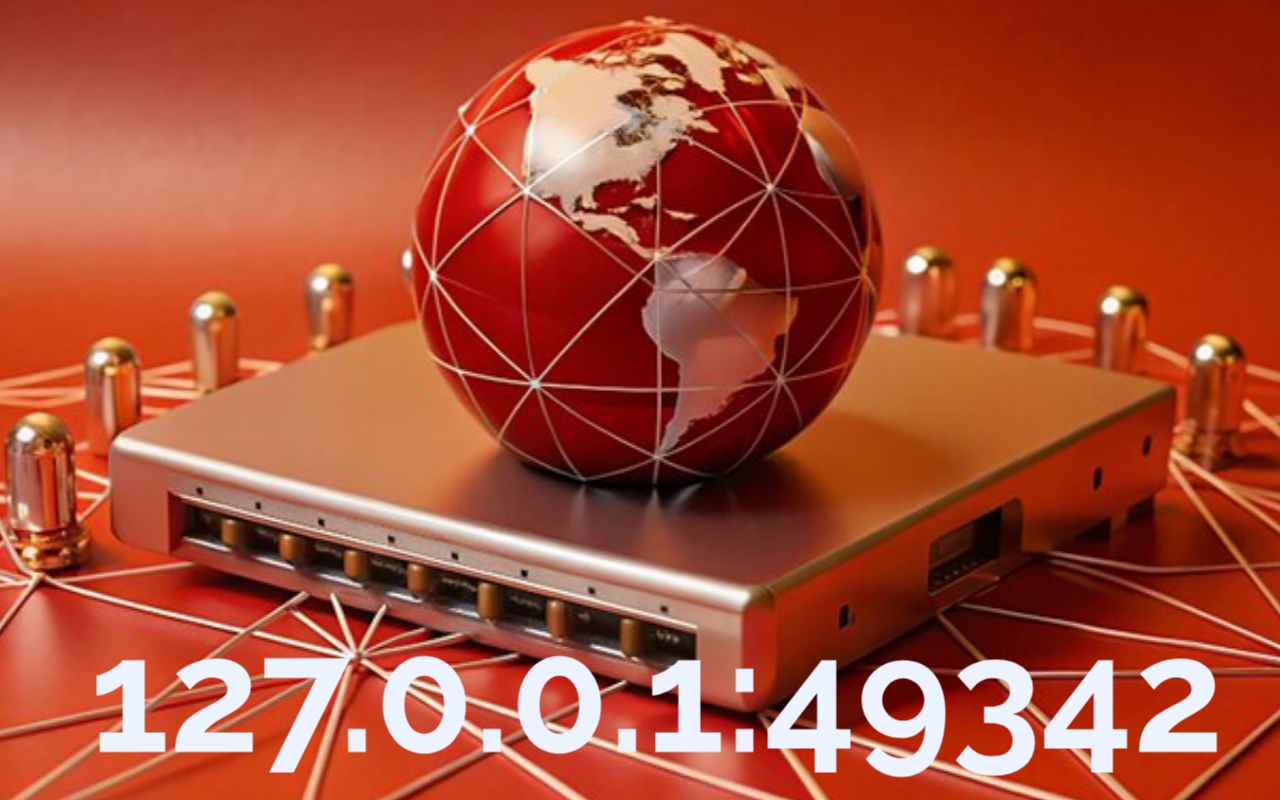Introduction
The IP address 127.0.0.1 is universally recognized as the loopback address, allowing a computer to communicate with itself. When combined with a port, such as 49342, this address forms a critical part of a local development environment, especially for testing and running applications in isolation from the network. Understanding how to effectively use and troubleshoot this setup is vital for developers and system administrators alike.
What is 127.0.0.1:49342?
127.0.0.1 refers to the localhost or loopback address, which is used to set up an IP connection to the same machine used by the end-user. The port number 49342 typically denotes a specific application or service running locally. It’s important to understand that each port can be used to run a different service, and 49342 might be dynamically chosen by developers for custom applications, testing environments, or default assignments in certain development tools.
Setting Up Localhost
To set up localhost, one must ensure the loopback interface is operational. This setup varies slightly by operating system. On Windows, it involves ensuring that the “Internet Protocol Version 4 (TCP/IPv4)” properties are set to automatically detect settings. For Unix-based systems like Linux or macOS, it might require the manual activation of the loopback device via command-line interface tools. Configuration typically involves editing files like /etc/hosts to redirect domain names to 127.0.0.1, allowing for easy access to locally hosted services.
Common Uses
Localhost is extensively used for software development, where developers need to run servers and services without exposing them to the internet. It’s ideal for initial stages of software testing because it allows quick access without the latency associated with network requests. The specific port 49342 could be linked to an application such as a local development server for a web application, a database management service, or any custom software that requires isolated testing.
Troubleshooting Access
When access to 127.0.0.1:49342 fails, the troubleshooting process begins with verifying that the specific application supposed to run on this port is active. Developers should check the application’s logs for any error messages. If the application appears to be running without errors, the next steps involve checking the network configurations—ensuring the loopback interface is not disabled, and there are no IP conflicts or incorrect settings that might prevent access to the port.
Firewall and Security
Firewall settings can significantly impact the accessibility of ports on localhost. For instance, although 127.0.0.1 is generally trusted, outgoing or incoming connections on new or uncommon ports like 49342 might be blocked by default. It’s crucial to adjust the firewall to explicitly allow connections to and from this port, especially when developing network applications that listen to non-standard ports.
Checking Port Accessibility
To determine if port 49342 is accessible, developers can use network tools like netstat on Windows or lsof on Unix-like systems to list ports currently in use and check if 49342 is among them. These tools can also show which application is using the port, which is crucial for debugging multiple applications running on the same machine.
Configuration Files
Correct configuration of services running on 127.0.0.1:49342 is fundamental. This often involves editing configuration files where the port number is specified. Errors in these files, such as syntax mistakes or incorrect port numbers, can lead to services failing to start or being inaccessible despite appearing to run.
Network Tools
For more detailed diagnostics, tools like ping, traceroute, and telnet can be used to test connectivity. While ping will generally not work with 127.0.0.1 as it does not leave the host, telnet can be used to connect to 127.0.0.1:49342 to check if the port responds, indicating the service is reachable.
Advanced Configurations
Advanced users might explore further configurations such as setting up virtual networks, or adjusting system-level network parameters that affect how localhost connections are handled. These might include modifying TCP/IP buffers or timeout settings to optimize performance for high-load environments.
How to Troubleshoot 127.0.0.1:49342 Connection Issues
Troubleshooting connectivity issues to 127.0.0.1:49342 involves a systematic check of both application settings and system configurations. Ensuring that the necessary firewall exceptions are made, and that the port is correctly configured and not used by another service, will typically resolve most issues. Using diagnostic tools effectively can quickly pinpoint where the problem lies, facilitating a faster resolution to connectivity problems.
Conclusion
The ability to effectively manage and troubleshoot connections to 127.0.0.1:49342 is a key skill for any developer or IT professional. This knowledge ensures that applications can be developed and tested efficiently, maintaining productivity and minimizing downtime due to misconfigurations or access issues.
FAQs
- What should I do if I cannot connect to
127.0.0.1:49342?- Ensure the application is running on that port and check your firewall settings to allow traffic on
49342.
- Ensure the application is running on that port and check your firewall settings to allow traffic on
- How can I verify that
49342is the correct port for my service?- Check the application’s configuration files or documentation to confirm the port settings.
- Which firewall settings should I adjust for localhost access?
- Allow incoming and outgoingconnections on port
49342in your firewall settings.
- Allow incoming and outgoingconnections on port
- Can local network configurations affect my access to
127.0.0.1:49342?- While local network settings generally do not impact localhost access, ensure your network adapter is configured to support loopback traffic.



